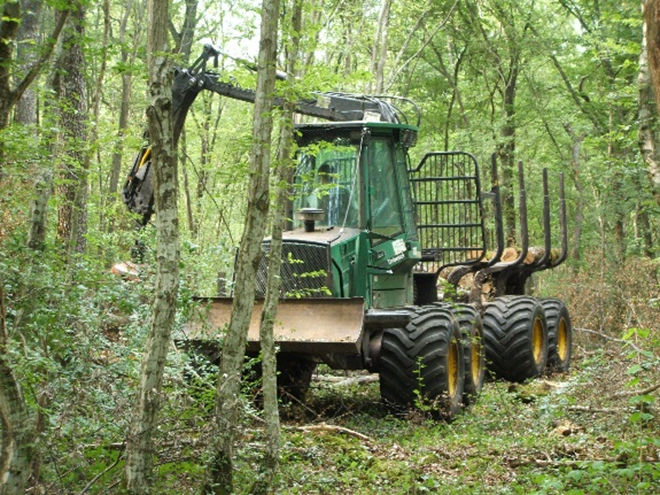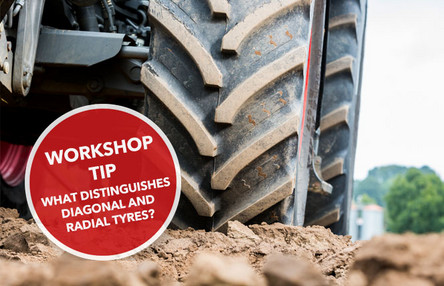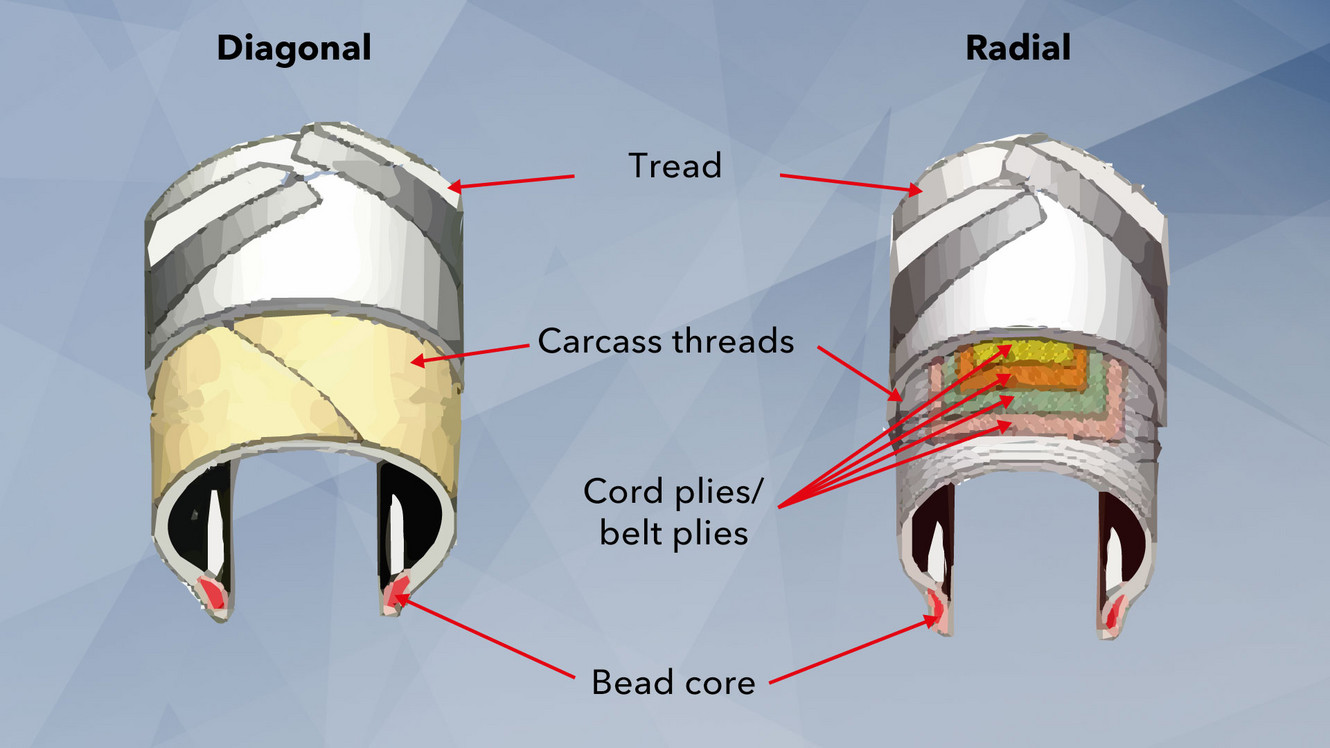Radial tyres were first launched on the market in 1946. Thanks to their technical superiority in many areas, this type of tyre spread rapidly and displaced the previously common diagonal-ply tyre from most areas of application.
Today, radial tyres are predominantly used on modern tractors and trailed machines. However, in certain specialized areas such as forestry, the use of diagonal-ply tyres still makes sense due to the product-specific characteristics. This pioneering technology has dominated the world of wheels since its development in 1898.

The differences between diagonal-ply and radial tyres
The older diagonal-ply tyres have several layers of nylon fibres inside, which are laid on top of each other at an angle of 55 degrees, i.e. diagonally. Due to their design, they form a fairly stiff carcass. On the one hand, such diagonally constructed tyres are very stable, can withstand high loads and are well protected against damage. However, their low flexibility increases rolling resistance and thus fuel consumption. The tyre also heats up quickly during use.
The first real radial tyre, the Michelin 185-400 SP, came onto the market in 1949. The "radial" in radial tyres also refers to the arrangement of the different layers in the tyre. In radial tyres, the fabric layers of the carcass run perpendicular to the direction of travel and are laid on top of each other at a 90-degree angle. In other words, the fibres and steel wires of the carcass radiate outwards from the centre of the tyre. The radial technology ensures that the sidewall and tread work largely independently, which promises various advantages. Such a carcass is significantly more elastic and leads to better cornering behaviour of the tyre. Rolling resistance is also reduced.
| Construction | Advantages | Disadvantages |
| Diagonal |
|
|
| Radial |
|
|
VF tyres are the next evolutionary step
In the meantime, however, radial tyre technology has also developed further. Currently, VF profiles are increasingly setting new standards. Here too, the construction follows the radial design, but thanks to further developed carcass technology, these tyres can carry the same load as comparable standard tyres at 40 percent lower inflation pressure - or up to 40 percent more load at the same tyre pressure. The innovative structure gives VF tyres the necessary flexibility and stability in changing pressure conditions and maintains safe traction. In practice, this type of tyre has a double benefit: In the field, the tyre's internal pressure can be reduced, thereby increasing the contact area while protecting the soil. For road traffic, however, the tyre pressure can be increased to save fuel.



